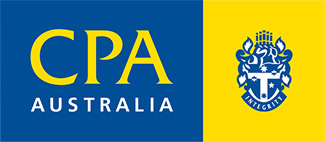Accounting Income Method
From 1 April, 2018, there is a new way of paying provisional tax called the Accounting Income Method (AIM).
Before we look at the new method, it’s worthwhile looking at the existing system.
Up until now, there have been two main methods of working out your provisional tax:
- Standard Method – this simply takes your tax liability from the previous year and adds 5% to it. There’s no science to it and if your income fluctuates, either up or down, it can be inaccurate.
- Estimate Method – this is where you as the taxpayer can estimate your tax at a lower level. You would normally do this if you believe that the standard method would cause you to pay more provisional tax than you need to, for instance if your profit is likely to decrease over the year ahead. You have the option of using the estimate method once during the income year.
With either of these methods, you would typically pay provisional tax three times a year if you are registered for GST on a two-monthly basis. Some taxpayers have only two payments if they pay their GST every six months.
There is also the ratio method which for many reasons has proved unpopular.
Introducing AIM
AIM relies on you using computer software, such as Xero, MYOB or Reckon. In fact, you can only opt for AIM if you use these approved software products. There is no way to submit an AIM return in paper form or using a spreadsheet.
What are the benefits?
AIM is certainly not going to suit every business. It’s likely to appeal to a business whose income fluctuates or is in some way uncertain in the year ahead. As such, start-up business may really benefit. If economic conditions deteriorate, Inland Revenue will refund overpaid provisional tax in much the same way as they do with GST when your expenses exceed your income.
There are a number of benefits but the main ones are:
- Your tax payments match your income – using AIM, your provisional tax is based on the income for the past two months. In any business you will likely have periods when your income in some months is lower than others. A good example is a business that’s highly seasonal, such as tourism or some horticulture businesses. For some, there will be no income at all at some times of the year, in which case you don’t have to make a provisional tax payment. On the other had, you may experience really business times when the money is rolling in. This means that you should have the cash available to pay the provisional tax the following month.
- No Use of Money Interest – Inland Revenue charges Use-of-Money-Interest on tax that is underpaid when you use the Standard or Estimate method. So long as you have correctly applied the AIM, Inland Revenue will not charge interest if your provisional tax is too low. This could happen if your accountant has to make some changes to your financial accounts at the end of the year that weren’t anticipated.
- No surprises – when we do your accounts at the end of the year, there may be a small amount of terminal tax to pay, or a refund, but it’s not likely to be very large as we have made most of the adjustments during the year.
The stated goal is to simplify the tax system but as you’ll see below, that may not be the result.
What type of businesses can use AIM?
You need to trade as a company or a sole trader. AIM is not available for partnerships or trusts.
In addition, your turnover (the amount of revenue you earn) must be under $5 million per annum.
Statement of Activity
The software produces what is called a “Statement of Activity” which is submitted to Inland Revenue electronically. This statement sets out your income for the year to date along with the expenses you have incurred. It also discloses the assets and liabilities in the business.
Can I go it alone or do I need an Accountant?
Setting up the system in the first place is critical. Why? Well, the AIM return has a lot of information in it that would usually be prepared by your accountant at the end of the financial year, such as:
- Depreciation on your fixed assets every time you file.
- Private expenses must be adjusted for at each installment date e.g. vehicle expenses and home office apportionment.
- Closing stock (sometimes called inventory) must be included. This means doing a physical stock take every couple of months or running a perpetual inventory system. If you opt for the latter, this may require investment in additional software.
- Shareholder’s salaries on drawings. This can be a real issue because many companies don’t know what their shareholders’ salaries will be until the final accounts are prepared. If you are on a PAYE salary, this would not be an issue.
- Accounts Payable and Accounts Receivable will need to be recorded if you are GST registered on an Invoice Basis.
- Non-deductible items must also be included.
As you can see, AIM could mean a lot of additional work and any discrepancies may have a pretty significant impact.
Do I need to use AIM?
No. The Standard and Estimate methods still remain so you can still opt for either of them.
There have been some significant changes to the standard method which has made it more attractive.
Use-of-Money-Interest Changes
For many years, Use-of-Money Interest has been charged when provisional tax has been underpaid by business taxpayers.
On the other hand, individual taxpayers (natural persons) have enjoyed a safe-harbour which protects them from Use-of-Money-Interest if their residual income tax is less than $50,000.
Now, all tax types enjoy this safe harbour provision, and it has been increased to $60,000 for the 2018 income year.
So as long as you make the provisional tax payments on the standard method, you are protected under the safe harbour provisions for your first two instalments of provisional tax. That’s a big benefit.
Is AIM the best thing since sliced bread?
Probably not. There are quite a few fish hooks.
Inland Revenue is promoting the new AIM method vigorously, as are the software providers, so it’s easy to get caught up in the excitement.
However, since the changes to the Use-of-Money-Interest were enacted, it’s probably fair to say that AIM has lost a little of its allure. Many business clients may now fall outside of the Use-of-Money rules completely. At the very least small businesses will be better able to manage their cash flow with these new rules.
On top of this, AIM requires quite a bit more work than initially envisaged, particularly from the taxpayer. The information that you currently prepare annually as part of your financial statements may be required every two months. That could impose new compliance costs on small businesses.
It’s also worth noting that if you opt for the AIM method, you cannot use tax pooling to manage your cash flow for provisional tax payments. That’s important because if a statement of activity is filed but payment isn’t made, penalties and interest will apply to the underpayment. These will continue to apply until you make the payment.
There are likely to be some additional fees from your accountant in setting up the new system to ensure that you file accurately. We definitely don’t recommend a DIY approach to AIM.
It is likely that by using AIM you’ll have less terminal tax to pay, but you’ll still need to file an annual tax return. Bear in mind too that you’ll be sharing a lot of additional information with Inland Revenue. In fact, you’ll be giving them a miniature set of financial statements as often as every two months.
OK. I still want to give AIM a go.
It’s February now there’s plenty of time to consider it.
You must start using AIM before the first payment date is due, so if you don’t start using AIM before the beginning of the financial year, you need to wait another 12 months to register. By filing a Statement of Activity at the end of May 2018 you will qualify as opting in, with the first AIM payment on 28 June.
Once you are in, you’re in, so you cannot opt out for another year.
Make sure you seek advice first to see that you are able to comply with the rules around AIM.
This article is general in it’s application and does not constitute tax advice. No assurance is given as to its completeness or accuracy. Generate Accounting is not liable in any way to you or anyone else for any decision made or action taken in reliance on the information. Before making any tax decision, you should consult an advisor.




1 thought on “Accounting Income Method – a new way of paying provisional tax”
Pingback: What IRD isn’t saying about AIM | Tax Management New Zealand